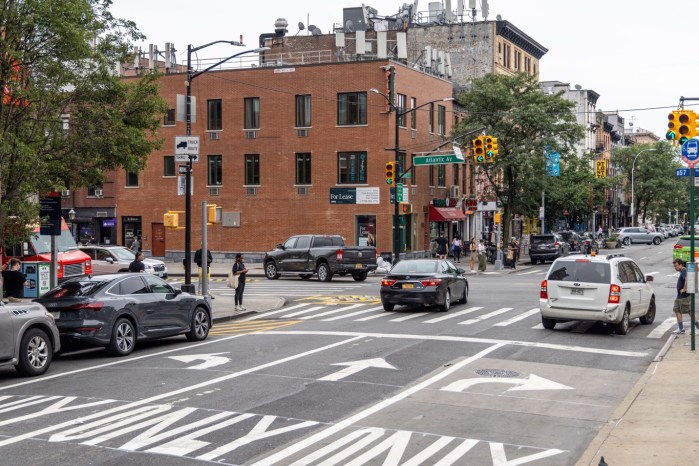Flatbush Avenue is getting the go-slow treatment this fall.
The Department of Transportation is lowering the speed limit along the second-longest Brooklyn road, as well as two other borough thoroughfares, as part of the city’s Vision Zero push to reduce traffic deaths to zero by 2024. Road-safety activists said that making busy, wide roads so-called “slow zones” is a crucial step towards saving lives.
“What’s really important about this program is that arterial roads are where roughly 60 percent of fatalities are happening,” said Caroline Samponaro, a spokeswoman for the car-critic group Transportation Alternatives. “You have to tackle the streets that are causing the greatest harm.”
The slowdown will affect all 7.8 miles of Flatbush Avenue and Flatbush Avenue Extension, from the Manhattan Bridge to Marine Park, though the speed limit will only go down to 30 from 35 along the stretch between Prospect Park and the Brooklyn Botanic Garden, where a driver fatally hit a woman in July.
Flatbush Avenue is among the deadliest roads in the borough, having seen 11 fatalities between 2008 and 2012, according to a Department of Transportation press release.
Lowering speed limits is a key component of the transportation department’s efforts to rein in reckless drivers and is considered common-sense by many, the agency’s head said.
“Slow zones are a critical and widely endorsed element of Vision Zero,” said roads czar and Cobble Hill resident Polly Trottenberg. “We are glad to work closely with local communities in bringing these life-saving measures to corridors across the city.”
In addition to the Flatbush Avenue speed reduction, which goes into effect in October, slow zones are coming to the entire 5.5-mile length of Coney Island Avenue this month, and to the whole 4.6 miles of Utica Avenue in October. Utica claimed the most pedestrian lives — 12 — of any of the 14 roadways up for slowing-down citywide, according to the Department of Transportation.
The initiatives come after the state legislature’s late June approval of a bill allowing the city to reduce the default speed limit from 30- to 25-miles-per-hour citywide without going through a piecemeal approval process. Trottenberg told the New York Times that not all roads with faster-than-35-miles-per-hour speed limits will have their limits lowered to 25, and that it will take time for crews to replace all the speed limit signs and re-time lights along roads getting adjusted.























